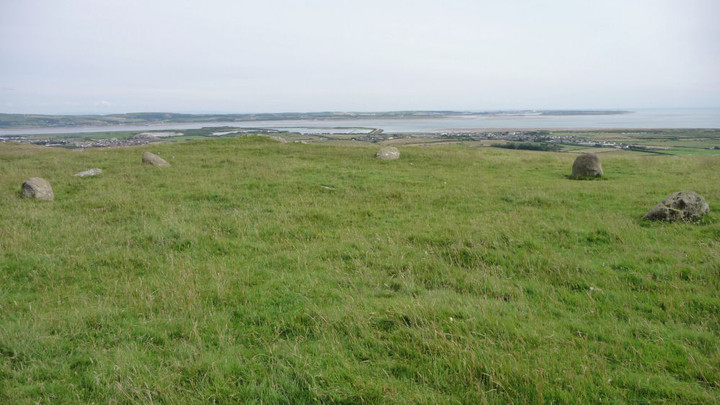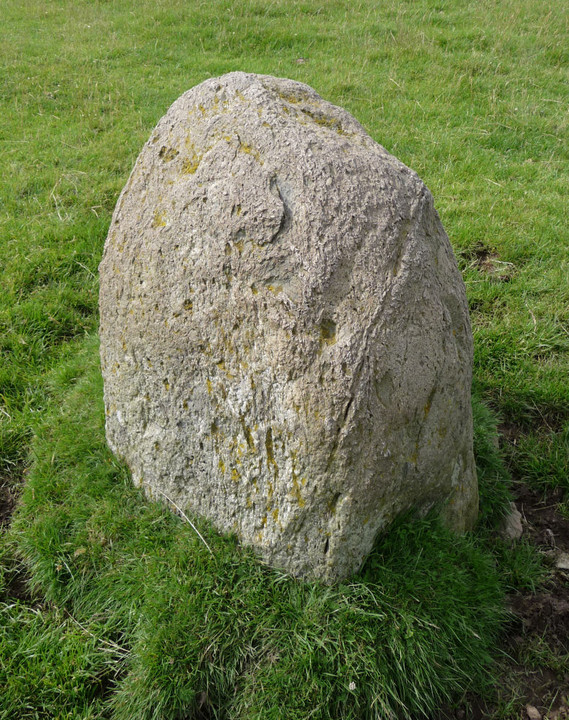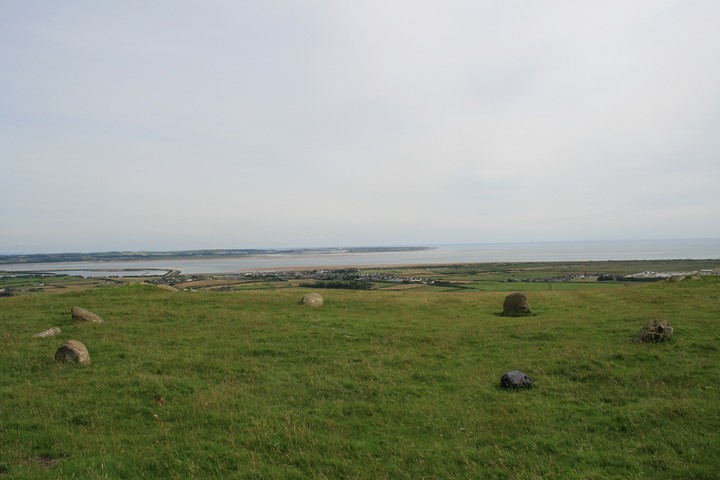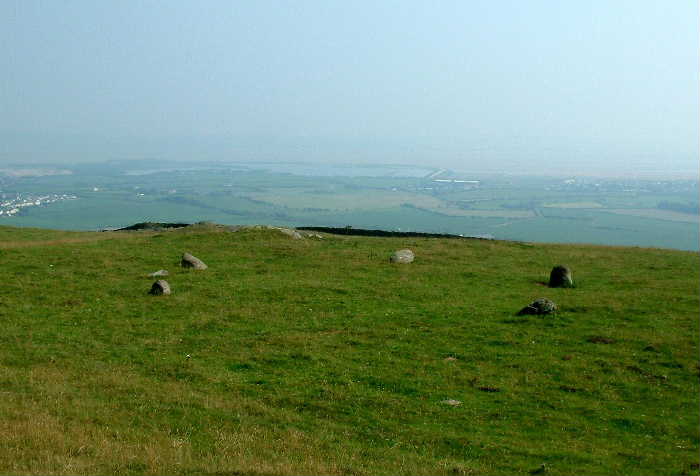
Lacra B, missing NW arc in the foreground.

Lacra B, missing NW arc in the foreground.


Lacra B, looking SE towards Millom, with its distinctive coastal defences.

Lacra B, looking south across Duddon Sands towards North Walney.

Turbinirvana

looking down to Millom and Duddon sands


Black Combe peeping into the picture.

A particularly stripey stone


Closer to one of the egg shaped stones.

My cardy wrapped camera bag assumes the role of one of the missing stones.

Lacra B with Black Combe

What a great view across the Irish Sea!

Amazing views

The weather wasn’t so good that day...

Lacra B stone circle

Lacra B stone circle
From Lacra D a gateless gap in the wall shows the way to this the best of the complex. Volcanic ash is once again used to form a circle, fifteen meters across, and once of maybe eleven stones, only six remain, the missing five leaving obvious gaps in the ring. Three of the six stand over a meter high, two of the stones are very egg shaped and nice to look at, rough to the touch but gentle in curve.
A very nice circle despite nearly half of it is gone, in the center one stone pokes through the grass, perhaps part of the cremated bone containing kerbed central ring. From here the possible stone row can be seen, though I didn’t know it at the time, yet somehow I still managed to photograph it.
I rolled my camera bag in my cardigan and used it to impersonate one of the missing stones, to good effect I reckoned too. See last pic.
Considering we started the day at Swinside, well known for being one of the best stone circles in the world, I still hugely enjoyed this complex of circles, rows and avenues. Well worth a visit
From the village I followed the footpath that crosses the railway and then follows a sunken trackway uphill. As I walked up through the rough pastures I was aware of Black Combe, this hill is huge but in my opinion its presence is almost benign. This massive, soft, whale-back of a hill has to compete with two other even larger presences, the sea in front of it and the central fells behind it. Never the less Black Combe looked marvellous and reminded me of Benarty in Fife, part of the landscape but not domineering.
What drew my eye from the hill was the gentle curve of the coast, the estuaries and of course, the sea. As I reached the top of the hill I was able to look along the coast over Millom, the Duddon estuary, Barrow, Walney Island, and across Morecambe Bay into Lancashire and on to North Wales, and as my eyes got used to the haze I was able to make out the faint profile of the Isle of Man on the horizon.
Once at the top of the hill the terrier and I made our way over to Lacra B. We found the circle quite easily. The circle is sat in knoll on the hillside, all around the circle are large outcrops of bedrock jutting out through the turf at forty five degrees almost as if they are defending the stone ring.
The circle is composed of low stones and has definitely seen better days. The largest stone is just over a metre tall. It’s possible to make out the slight rise of the central cairn but the thing that gives this circle its charm is the views, again it’s the Duddon estuary, the coast and the coastal plain that draw the eye with Black Combe still visible over the brow of the hill.
I sat down in the circle and thought about how the land was used in the past, the estuaries and coast would have been an attractive place to live, Early man would have found this a rich place to forage and hunt. Wildfowl, shellfish, fish and animals would have lived here in abundance. Later, the pastoralists and farmers would have found the fertile Cumbrian plain ideal for raising stock; the surrounding hills would have provided summer pastures, much as they do today. The fertile soils of the coastal plain would also be an ideal place to plant and raise crops, the rivers running off the hills would have ensured an abundance of clean, fresh water, the wooded slopes providing an almost endless supply of timber for building and fuel.
The coast would have also provided the opportunity for contact with others. Archaeological evidence shows us that people have been navigating these coasts since at least the Neolithic, this part of Cumbria would have been an ideal stopping-off point for those early navigators steering a course to and from Wales, the Isle of Man, Southern Scotland or Ireland and they may well have used Black Combe as a guide.
Information from the English Heritage Scheduling Record for Lacra B:
A circle of six granite boulders, some standing and some fallen, enclosing an area of approximately 14.7m in diameter. The stones are irregularly shaped and vary in height between 0.35m-0.95m. Limited excavation of the monument in 1947 located a stone socket hole and suggested the original circle consisted of eleven stones. Additionally a central funerary cairn of earth and stones c.9.7m in diameter and up to 0.6m high constructed upon the old land surface was discovered. A flint flake lay upon the top of this mound. In the north east sector of the circle, also lying on top of the mound, part of a ring of stones, each about 0.6m long and pointing towards the centre of the circle, was found. An earthfast stone presently protruding above the turf line in the north west sector of the circle represents a continuation of this ring of stones which measures c.4.8m in diameter. A layer of earth considerably reddened by fire and considerable amounts of ash wood charcoal were found during the excavation near the centre of the mound just above the old landsurface. Below the very centre of the mound, under some large stones, fragments of burnt bones were all that remained of the primary burial. An excavation trench was extended to the east of the stone circle. Here an arrangement of stones was discovered lying on the old landsurface, which is thought to form either part of a ring encircling the standing stones, or one of a heap of stones assembled at the four cardinal points of the circle to help in the construction of the circle.





























